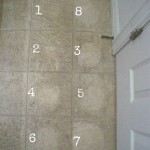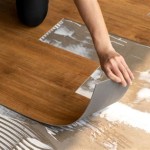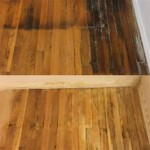How To Get Super Glue Off Vinyl Flooring
Vinyl flooring, prized for its durability and affordability, often finds itself in homes and businesses alike. However, accidents happen, and one common mishap involves the tenacious adhesive known as super glue. Super glue, or cyanoacrylate adhesive, bonds rapidly and forms a strong, rigid connection, making its removal from vinyl flooring a challenging task. This article details several methods for safely and effectively removing super glue from vinyl flooring, minimizing the risk of damage to the flooring material.
The key to successful super glue removal lies in carefully softening the adhesive bond without harming the underlying vinyl. This requires patience and the application of appropriate solvents or techniques. Aggressive scraping or the use of harsh chemicals can irreparably damage the vinyl surface, leading to discoloration, scratching, or even melting. Therefore, a systematic approach, starting with the gentlest method and progressing to more assertive techniques only when necessary, is highly recommended.
Understanding the Nature of Super Glue and Vinyl
Before attempting any removal method, it's crucial to understand the properties of both super glue and vinyl flooring. Super glue's rapid bonding is due to its reaction with moisture in the air, forming a strong polymer chain. This polymer is resistant to many common solvents, but it can be weakened by certain chemicals or by heat. Vinyl flooring, on the other hand, is composed of polyvinyl chloride (PVC) and various plasticizers, stabilizers, and pigments. It is generally resistant to water and many household chemicals, but it can be sensitive to strong solvents and high temperatures.
The compatibility of the removal agent with the vinyl flooring is paramount. Always test any cleaning solution in an inconspicuous area of the floor before applying it to the super glue stain. This ensures that the solvent does not discolor, soften, or otherwise damage the vinyl. The testing area should be observed for several hours after application to identify any delayed reactions. Failing to test can result in significant damage requiring costly repairs or floor replacement.
Initial Steps: Pre-Treatment and Gentle Removal
Before employing any chemical solvents, begin with the gentlest approach: attempting to mechanically remove the super glue. This method is most effective when the glue has not fully cured or when dealing with small, isolated droplets. Start by scraping the edges of the glue with a blunt, non-abrasive tool, such as a plastic scraper, a credit card, or a wooden spatula. Avoid using metal tools, as these can easily scratch the vinyl surface.
Apply gentle pressure and try to lift the glue from the edge, working inward. If the glue resists, do not force it. Instead, proceed to the next step: softening the glue with warm, soapy water. Soak a clean cloth in warm (not hot) water mixed with a mild dish soap. Wring out the cloth, leaving it damp rather than dripping. Place the damp cloth over the super glue stain and let it sit for 15-30 minutes. This allows the warm water to penetrate the glue, softening it and making it easier to scrape away.
After soaking, reattempt scraping with the blunt tool. If the glue begins to lift, continue working around the edges until the entire stain is removed. If the glue remains stubbornly attached, move on to a more targeted solvent approach. Remember that patience is paramount, and prolonged soaking is preferable to aggressive scraping, which could damage the flooring. Repeat the soaking process multiple times if needed, allowing ample time for the warm water to work its way into the adhesive.
Solvent-Based Removal Techniques
If the initial mechanical removal attempts prove unsuccessful, solvent-based techniques become necessary. Several solvents can effectively dissolve or weaken super glue, but their compatibility with vinyl flooring must be carefully considered. The most commonly recommended solvents include acetone, isopropyl alcohol, and specialized super glue removers.
Acetone: Acetone, a common ingredient in nail polish remover, is a powerful solvent that can dissolve super glue. However, its strength also poses a risk to vinyl flooring. Always test acetone in an inconspicuous area first. If the test is successful, apply a small amount of acetone to a cotton ball or clean cloth. Gently dab the acetone onto the super glue stain, avoiding excessive saturation. Allow the acetone to sit for a few minutes to soften the glue, then attempt to scrape it away with a blunt tool. Repeat as necessary, being careful to minimize the amount of acetone that comes into contact with the vinyl. After removing the glue, thoroughly clean the area with warm, soapy water to remove any remaining acetone residue.
Isopropyl Alcohol: Isopropyl alcohol, also known as rubbing alcohol, is a milder solvent than acetone and may be less likely to damage vinyl flooring. However, it may also be less effective at dissolving super glue. Follow the same application procedure as with acetone: test in an inconspicuous area, apply sparingly to a cotton ball or cloth, dab onto the stain, and scrape away after a few minutes. Isopropyl alcohol may require multiple applications to fully soften the glue. Clean the area thoroughly with warm, soapy water afterward.
Specialized Super Glue Removers: Several commercially available super glue removers are specifically formulated to dissolve cyanoacrylate adhesives. These removers often contain a blend of solvents and additives designed to minimize damage to surrounding surfaces. Always read and follow the manufacturer's instructions carefully when using these products. Test the remover in an inconspicuous area before applying it to the super glue stain. These products are often more expensive than acetone or isopropyl alcohol, but they may offer a safer and more effective solution.
Regardless of the solvent used, adequate ventilation is crucial. Acetone and isopropyl alcohol can produce irritating vapors, so ensure the room is well-ventilated by opening windows or using a fan. Wear gloves to protect the skin from prolonged exposure to solvents. Avoid using heat guns or other heat sources to accelerate the solvent's action, as this can damage the vinyl flooring.
Using Oil-Based Products as Alternatives
In addition to the solvents discussed above, certain oil-based products can also be used to loosen super glue from vinyl flooring. These products work by penetrating the glue and weakening its bond. Options include mineral oil, baby oil, and even cooking oil.
Apply a small amount of the chosen oil to the super glue stain and allow it to sit for several hours, or even overnight. Cover the area with a plastic wrap to prevent evaporation and keep the oil in contact with the glue. After soaking, attempt to scrape away the glue with a blunt tool. The oil should have softened the glue, making it easier to remove. This method is generally gentler than using solvents like acetone or isopropyl alcohol, making it a safer option for delicate vinyl flooring.
After removing the glue, thoroughly clean the area with a degreasing dish soap and warm water to remove any oil residue. Failure to remove the oil can leave a slippery surface and attract dirt and grime. Rinse the area well and dry it with a clean cloth. This method is particularly useful for removing small amounts of super glue or when the vinyl flooring is known to be sensitive to solvents.
Dealing with Stubborn Residue
Even after removing the bulk of the super glue, a thin layer of residue may remain on the vinyl flooring. This residue can be difficult to remove and may require additional treatment. One effective method for removing stubborn residue is to use a paste made from baking soda and water.
Mix baking soda with water to form a thick paste. Apply the paste to the residue and gently rub it in a circular motion using a soft cloth or sponge. The mild abrasive action of the baking soda can help to lift the residue without scratching the vinyl. After scrubbing, rinse the area thoroughly with warm water and dry it with a clean cloth. Repeat as necessary until the residue is completely removed.
Another option for removing residue is to use a melamine sponge, also known as a "magic eraser." These sponges are made from a very fine abrasive material that can effectively remove dirt and stains from various surfaces. Wet the melamine sponge and gently rub it over the residue. Be careful not to apply too much pressure, as the sponge can scratch delicate surfaces. Rinse the area thoroughly with warm water and dry it with a clean cloth.
In extreme cases, if the residue persists despite these efforts, a specialized vinyl floor cleaner may be needed. Choose a cleaner that is specifically designed for vinyl flooring and follow the manufacturer's instructions carefully. Test the cleaner in an inconspicuous area before applying it to the affected area.

How To Remove Super Glue From Laminate Flooring 14 Steps

How To Remove Vinyl Glue From The Floor Effective Cleanup Guide Waste Removal Usa

Removing Glue From Vinyl Plank Flooring Hometalk

Best Ways To Take Out Even Impossible Remove Glue From Floors

How To Remove Vinyl Glue From The Floor Effective Cleanup Guide Waste Removal Usa

How To Remove Glue Residue From Vinyl Flooring

Removing Glue Or Adhesive From Hardwood Floors The Speckled Goat

Don T Panic If You Spill Super Glue On Wood Floors Here S A Simple Solution

Removing Glue Or Adhesive From Hardwood Floors The Speckled Goat

How To Remove Vinyl Glue From The Floor Effective Cleanup Guide Waste Removal Usa
Related Posts








